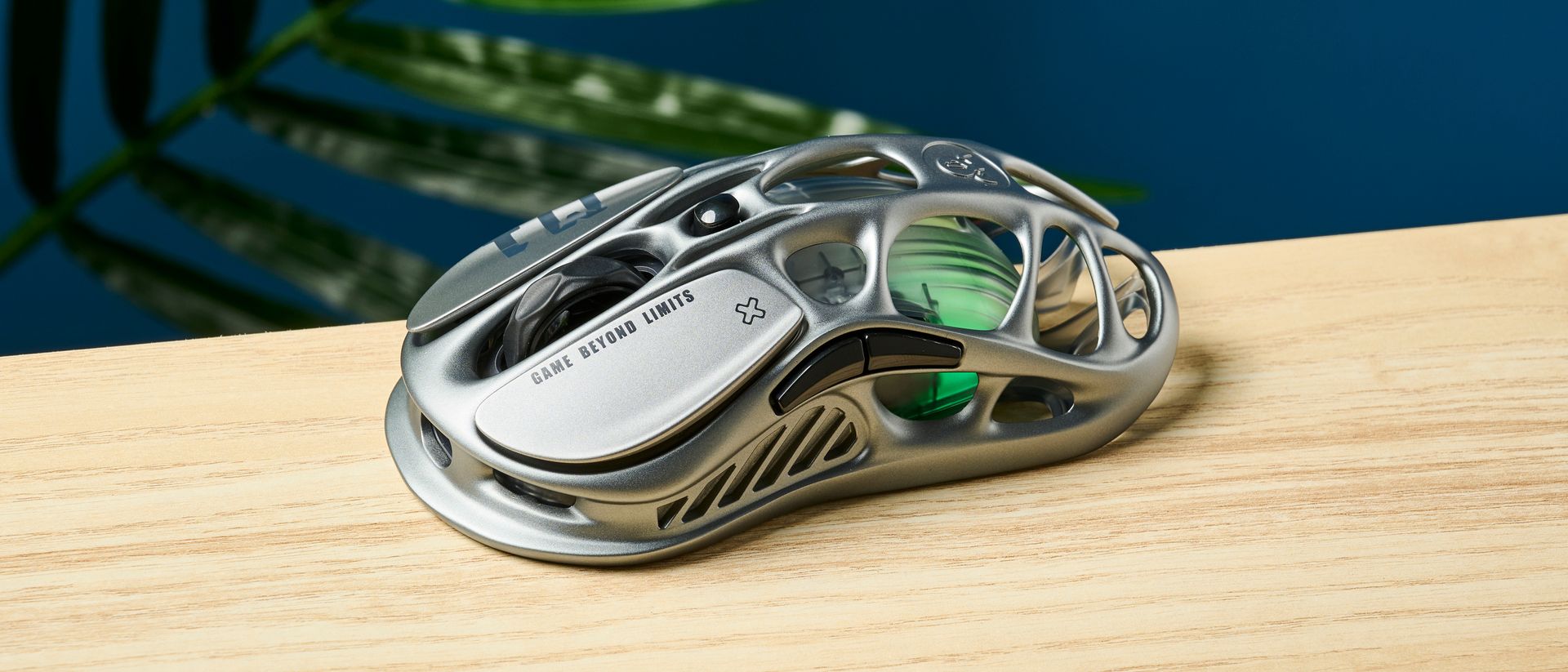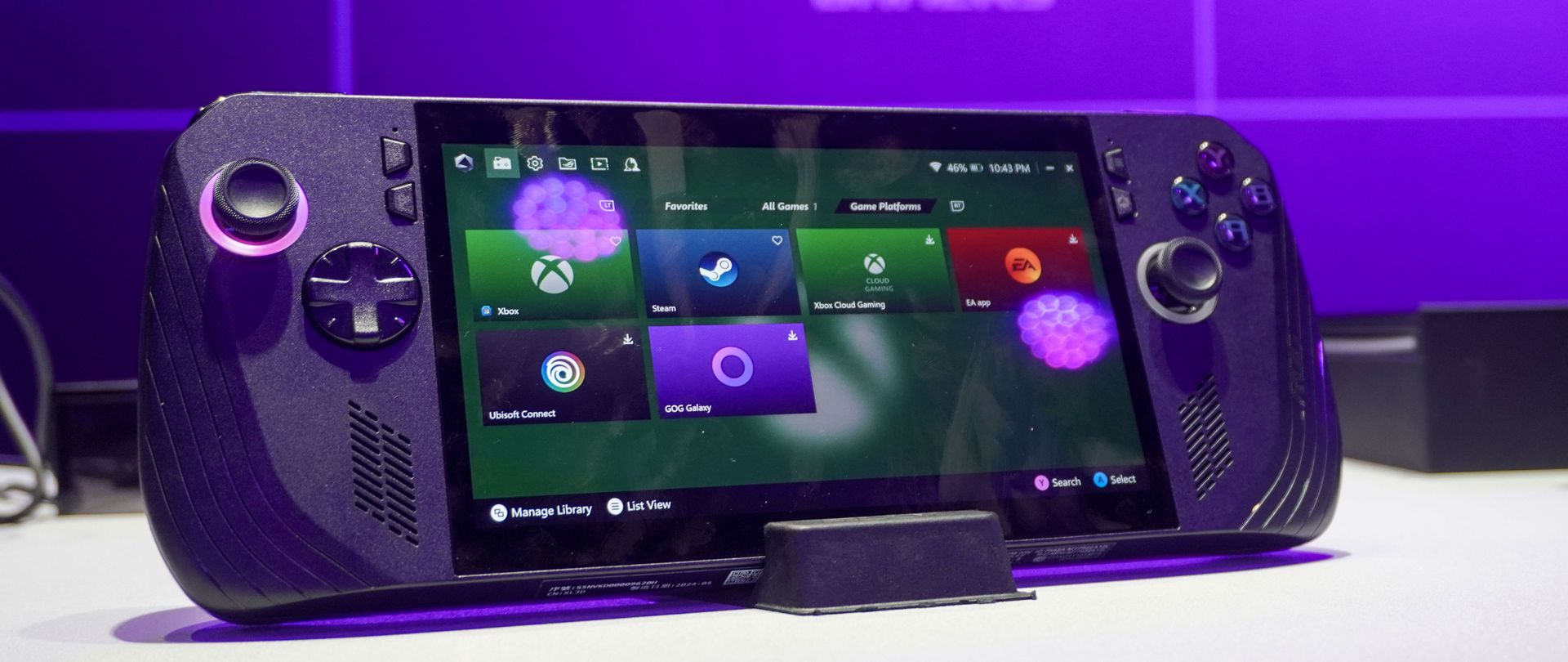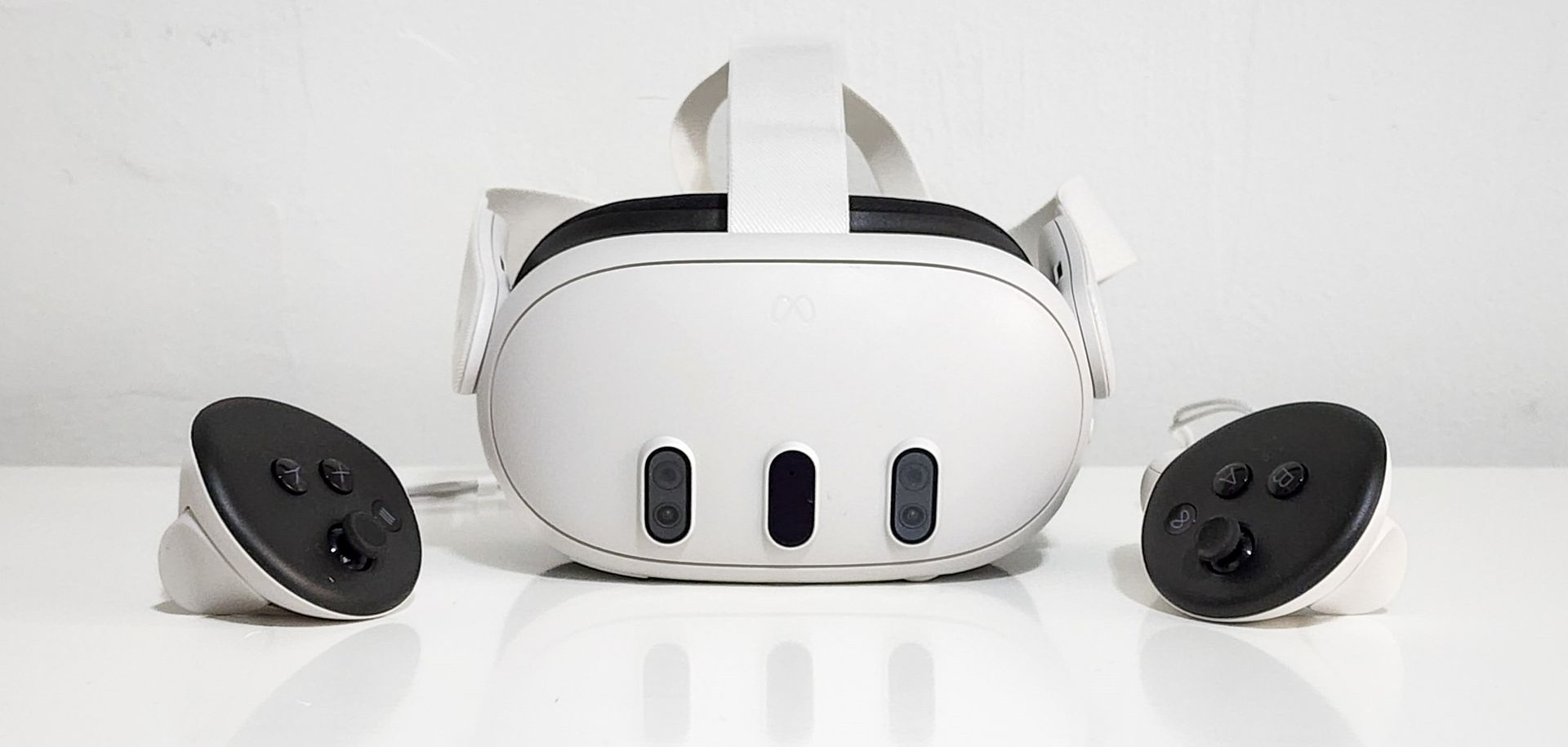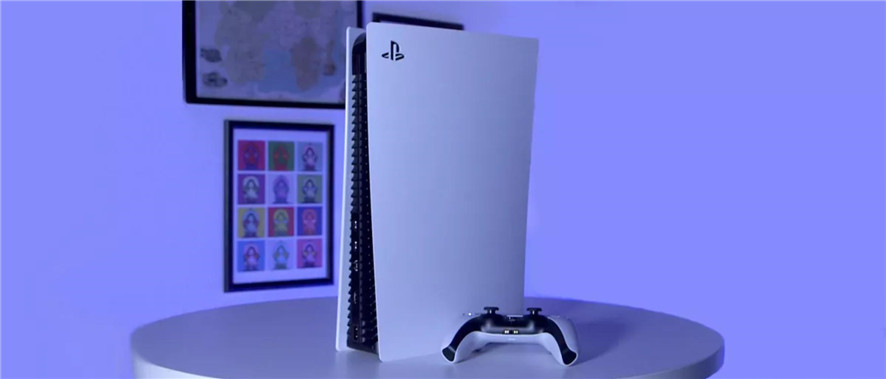
One-Minute Review
We were hoping for great things from the PS5, and Sony’s next-gen console certainly delivers where it matters most.
Sony has re-imagined the key parts of the experience – from a simpler setup and new well-thought-out user interface, to a revolutionary controller and added bonuses for PS Plus members. The result is a console that we can’t help but be impressed with, and it helps that it has a compelling lineup of games to play on day one.
It’s finally out – you can buy PS5 in stores across the US, and also buy PS5 UK consoles too. We’re also rounding up all the future PS5 deals and bundles you can expect so you don’t miss a great deal.
- PS5 size comparison: is the PlayStation 5 too big?
- PS5 vs PS5 Digital Edition: which next-gen Sony console is for you?
Sure, there are problems with the number of first-party games there are at launch (only four if you include pack-in game Astro’s Playroom) – and it would have been nice to see further support for previous generations of PlayStation titles, not just PS4 games – but the PlayStation 5 feels like a solid investment nevertheless, and we’re confident that the PS5 experience will improve with age.
You might be tempted to run out and buy a 4K/120Hz TV with HDMI 2.1 to take full advantage of the console’s peak capabilities, but even without one you’ll enjoy unbelievably fast load times and a gorgeous new UI.
The PS5 caters to both primed and ready next-gen gamers and tepid PS4 owners looking to dip their toes into the future of gaming – and for the latter it’s a console that so seamlessly bridges the gap between the last generation and the next that you probably won’t need to boot up your PS4 ever again.
From big upgrades like the super-fast NVMe SSD and powerful GPU that enable higher frame rates and ray tracing, to subtle touches like the built-in microphone on the controller that can serve as a quick stand-in for a headset, the PS5 feels like it was built for ease of use as well as pure power.
We’ve yet to get our hands on the PS5 Digital Edition, which we may feel differently about, but if you’re still on the fence about buying the PS5, we can wholeheartedly recommend the console as a welcome upgrade over the PS4, and an exciting portal to next-gen gameplay.
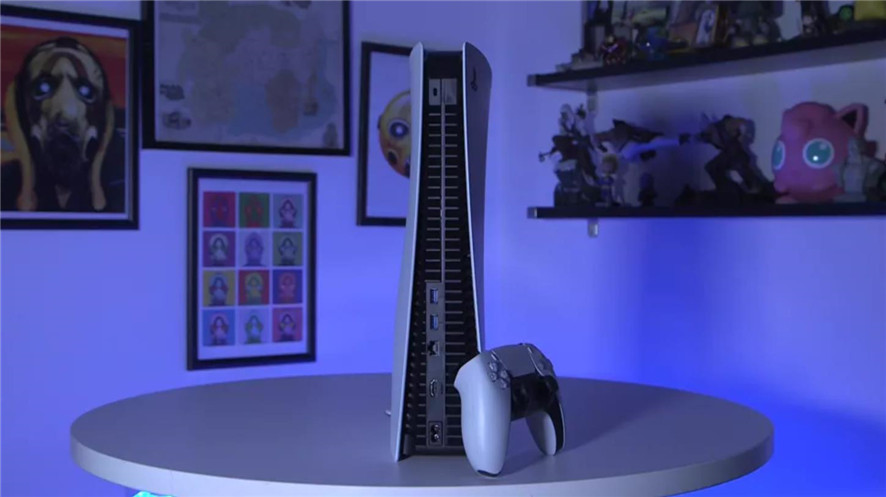
- Huge for a modern gaming console
- Space-age aesthetic is polarizing
- But the size means more space for air ventilation and a bigger fan
If gaming consoles had weight classes, the PS5 would be in the heavyweight division. We measured it to be around 39 x 10.4 x 26cm (H x W x D) – though the curved surfaces make getting an exact measurement difficult – and it weighs in at 4.5kg, giving it a noticeable heft when you pick it up.
With those measurements in mind, it’s easy to see how the PlayStation 5 is the largest console Sony has ever made, and it teeters on the brink of being simply too big for a device that’s supposed to sit under your TV.
Many will have to rethink their current setup or upgrade their entertainment centers entirely to accommodate Sony’s new machine, and that’s a problem that no one should have to worry about when picking up a new console.
As for the colors and shape of the console, well, they can be kind of polarizing, too. Some of us on the team absolutely love the PS5 design, while some of us hate it. There’s no denying, however, that its gargantuan size and two-tone color scheme demands attention in any home.
One element that’s a delightful touch, and universally liked by the TechRadar team, is the system’s subtle lighting effect, which creates a soothing hue when the console is in operation or rest mode.
It adds to the PS5’s space-age look and feel, and represents a nice touch of continuity from the PS4. Much like the PS4, when the console is in rest mode the light turns orange, and when the PS5 is turned on it changes from blue to white.
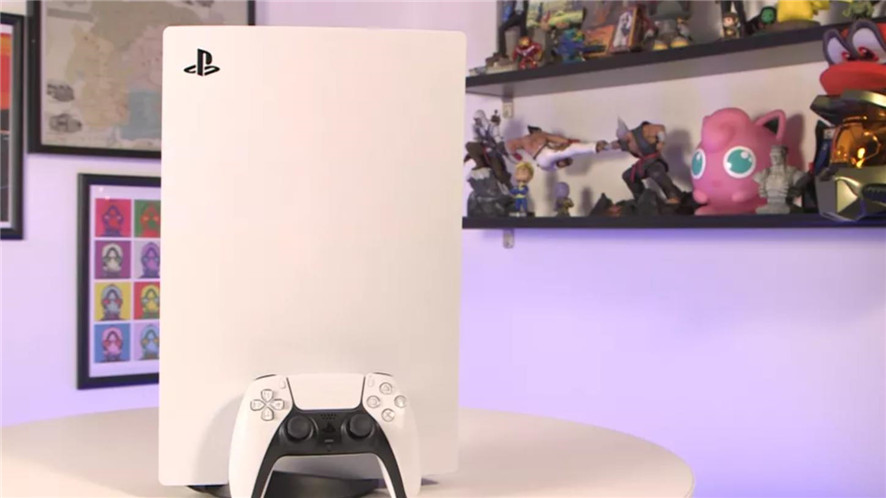
We’re a bit bemused by Sony’s choice to put glossy plastic down the center spine of the console, though, particularly as that’s where the front USB ports are located. We can’t say for sure, but there’s a possibility that the plastic will become scratched over time unless you take extra care when plugging in devices – and if that’s the case, it seems like a rather big oversight on Sony’s part. It’s also a big dust and fingerprint magnet.
Due to its curves and tall stature, it’s not just a case of placing the console down and playing once you pull it out the box either – you’ll need to wrap your head around the PS5’s attachable stand first.
The console can’t be placed horizontally without it, and you risk impeding airflow if you don’t use it when the PS5 is standing vertically. It’s an extra step that, while necessary, will hopefully be omitted when the console’s inevitable ‘slim’ version arrives in a couple of years.
The stand, while functional, feels slightly cheap in the hand. It has a small compartment to hold one lone screw (don’t lose this, as you’ll need it when placing the console vertically) and at first glance, it doesn’t look like the setup will actually work when laying the console flat.
To its credit, though, it does the job in a no-thrills fashion – however, we found the stand slipped off the small lip that it clamps onto multiple times when we shifted our unit into position.
In terms of ports, the front of the PS5 has a USB-A and USB-C port, while the back sports two USB-A ports, a HDMI 2.1 port, an Ethernet port and a power port. There are no proprietary ports on the console, which is always a bonus if you need to replace the odd cable.
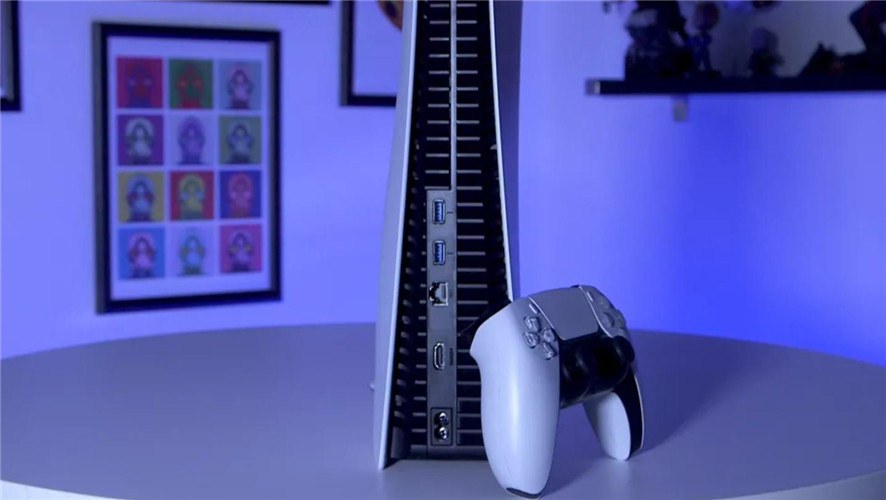
- Capable of 4K/120fps gameplay as well as support for 8K/60
- Faster loading times thanks to new SSD
- Tempest 3D audio tech is like Atmos-lite
- System runs cool and quiet nearly all the time
When it comes to specs, the PS5 is a technically impressive piece of hardware. There’s the new custom RDNA 2 GPU that can push 4K resolution at 120 frames per second, and the octa-core AMD Zen 2-based CPU with a 3.5GHz clock speed.
Throw in 16GB of GDDR6 memory and a 825GB NVMe SSD, and this is a machine with some seriously impressive specs. The PS5 is also capable of outputting 8K resolution, however, we’ll need to wait for an firmware update from Sony before it’s able to do so.
In fact, the only real issue we have with the PlayStation 5’s spec sheet is the amount of storage available. It’s only using an 825GB SSD instead of, say, a 1TB or 2TB SSD.
That decision was clearly made to cut down on the cost of the console, but it means that you can run out of storage quickly if you’re not being judicious about which games you keep installed.
The console comes with 667.2GB of usable storage, which we found held around 16 games: two PS5 titles, which were Astro’s Playroom and Marvel’s Spider-Man: Miles Morales, and various PS4 games like God of War and Detroit: Beyond Human.
The available space actually went a bit further than we thought, although your mileage will obviously vary depending on the size of the games you have installed.
It is possible to upgrade the internal storage with a PlayStation-certified NVMe SSD, but the issue here is this option has been locked by Sony at launch. When, down the line, Sony finally unlocks this expansion port you’ll need to pop off the PS5’s plastic faceplates to reveal the empty SSD bay.
It isn’t the most intuitive of methods, and feels like a slight oversight on Sony’s part – but hopefully it’s only something you’ll need to do once.
The good news is that you’re also able to use external hard drives and SSDs by plugging them into the USB port. You won’t experience the same lightning-fast load times that you get from the built-in SSD and optional (not to mention locked) SSD bay. But if you use an external SSD, you’ll still see a massive boost to load time performance over a regular mechanical hard drive.
We plugged in an external SSD into one of the PS5’s USB ports and the process of getting things set up was effortless. The console detected that an external drive had been connected, and once it was formatted, we were able to store and transfer PS4 games to it. You can’t store PS5 games or save data to external storage, however, so bear that in mind.
If you do run out of space, or are confused by how storage works on the PS5 in general, check out our useful explainer. You can also find out how to transfer PS4 save data to PS5.
While few of the launch games are really going to give the new hardware a run for its money, we can already see the potential in Sony’s upgraded hardware.
Load times in Marvel’s Spider-Man Remastered, for example, have gone from 15-20 seconds on the PS4 to less than a second on the PS5, while Astro’s Playroom locked into 60 frames per second at a 4K resolution and didn’t let go. It’s a sumptuous-looking game.
In the future, more titles will be able to run at 4K resolution at 120 frames per second, and there’s the potential that some less graphically intensive games could reach up to 8K/60fps.
For now, though, we don’t expect many games to hit that ambitious target (most will drop the resolution from 4K to achieve a higher frame rate), but there’s a chance some titles will be able to achieve that coveted 4K/120fps output down the line.
A small slice of the PS5 launch library support 120 frames per second, and include Call of Duty: Black Ops Cold War, Devil May Cry V: Special Edition, Dirt 5, Rainbow Six Siege and WRC 9, though you’ll need a HDMI 2.1-compliant TV to display the 120Hz refresh rate at higher than 1080p resolution.
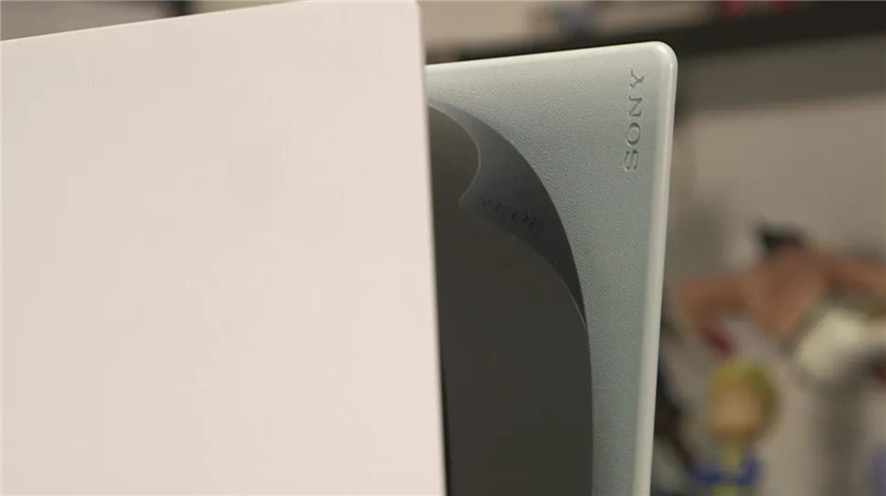
So what can you expect at launch? For now at least, most games will be capable of delivering 4K resolution at 30fps or 60fps when using a game’s Performance Mode (which we’ll explain below). Many will also utilize 4K image assets for crisper textures, while HDR support helps to provide better colors and contrast.
Combine that with ray tracing and improved particle effects that are now possible with the current suite of development tools, and games look leaps and bounds better now than they did a decade ago.
Though not every PS5 launch game will have it, most should feature the aforementioned Performance Mode, which prioritizes higher frame rates over resolution and extra graphical features.
With many games this sacrifices various graphically-intensive effects like ray tracing or higher shadow quality, and drops the base resolution, in order to achieve higher frame rates like 60fps instead of 30fps.
But why would you want the extra frames at the expense of resolution? Well, higher frame rates make games feel far more responsive – which is a must for first-person shooters that require twitch-based reflexes and split-second decisions.
For some gamers, higher frame rates are the holy grail for consoles – something that has been hard to achieve for decades due to weaker hardware. To have this finally be an obtainable goal feels like a monumental achievement, even if it comes at the cost of some graphical flourishes.
If you’d prefer not to use Performance Mode, you can always choose Resolution Mode, which prioritizes higher resolutions, better rendering techniques like ray tracing and more detailed graphics.
We got a taste of that with Marvel’s Spider-Man: Miles Morales, and we loved what we saw. Lighting was improved substantially: windows glistened in the sunlight and contained realistic reflections, and the particle effects looked stunning.
What you can expect from this new generation of gaming, then, is faster load times, better frame rates in Performance Mode and higher target resolutions everywhere else. Simply choose which option you prefer.
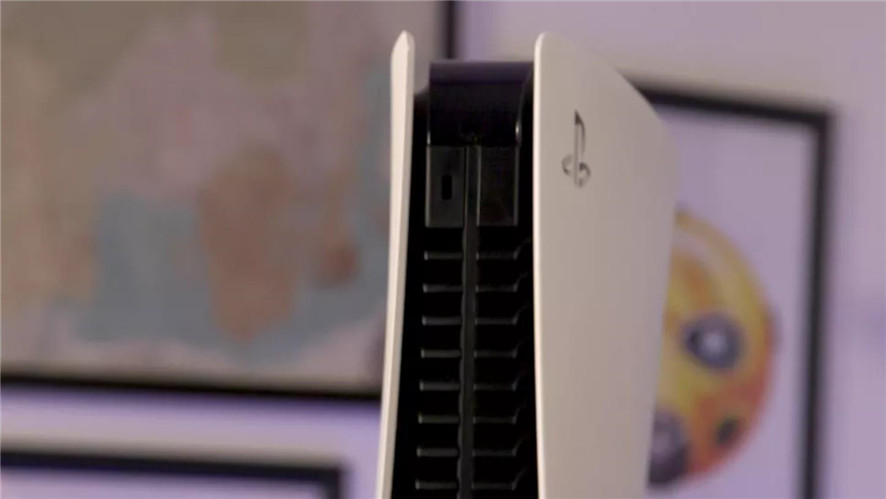
How good is PS5’s 3D Tempest Audio?
The PS5’s 3D Tempest Audio is Sony’s take on Dolby Atmos, or spatial audio in general. It works on any headset, with support for TV speakers coming sometime after the PS5’s launch.
We’ve tested various spatial audio solutions in the past, ranging from Windows Sonic to Dolby Atmos, and we’ve found that PS5’s 3D Audio is a comparable experience overall, though we’d like to test it with more games in the future.
We enjoyed hearing ships fly past and over our head in Astro’s Playroom, and appreciated being able to pick out thugs that were closing in on us in Marvel’s Spider-Man: Miles Morales. It’s not as detailed or as realistic as we first hoped, though, at least not at this stage, and it will be up to developers to get the most out of the technology as it matures.
At launch, Sony says, you can expect to experience Tempest Audio in all four of its first-party titles (Astro’s Playroom, Marvel’s Spider-Man: Miles Morales, Demon’s Souls and Sackboy: A Big Adventure), with additional titles coming after launch.
We are Tradelectronics, licensed second-hand electronics dealer located in Sydney CBD, experts in trading used laptops, old cameras & lens, and used mobile phones. Fast, Reliable & We Pay More! Get a free quote on your favourite WhatsApp, Facebook, SMS & Email, instant reply!
| Click icon for WhatsApp Quote | Click icon for facebook Quote |
 |
 |
- We are open from Mon – Sat 12pm – 7pm
- Get your free quote from WhatsApp and Messenger are highly recommended, we can guide you through in finding the accurate specs for your laptops, cameras & lens, mobile phones as well. As such we can provide a more precise quote for you.
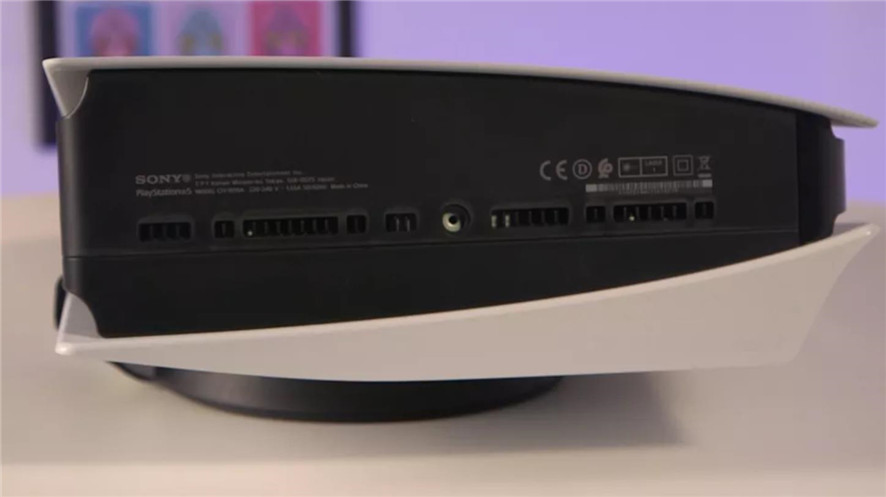
What about heat and noise?
The PS5’s monstrous footprint gives it one significant advantage over its predecessor in that the console is basically silent – and heat production is also minimal.
It’s a monumental improvement over the PS4 and PS4 Pro, which were renowned for their ability to kick up the system fans to obnoxious levels and output lots of heat, particularly on the earlier models.
We held our hand near the system during a long play session, and although the PlayStation 5 was clearly outputting hot air (as it’s designed to do) it was emitting far less than what the PS4 Pro would push out.
Very rarely in our testing did the fans reach an audibly loud level to the degree that the PS4 Pro did when running games like Horizon: Zero Dawn or God of War.
However, that could simply be due to the fact that we haven’t seen any resource-heavy next-gen-only games yet. Sony has also promised that it plans to optimize the PS5’s fans using over-the-air updates, so the machine could get louder, or indeed quieter, with certain games later down the line.
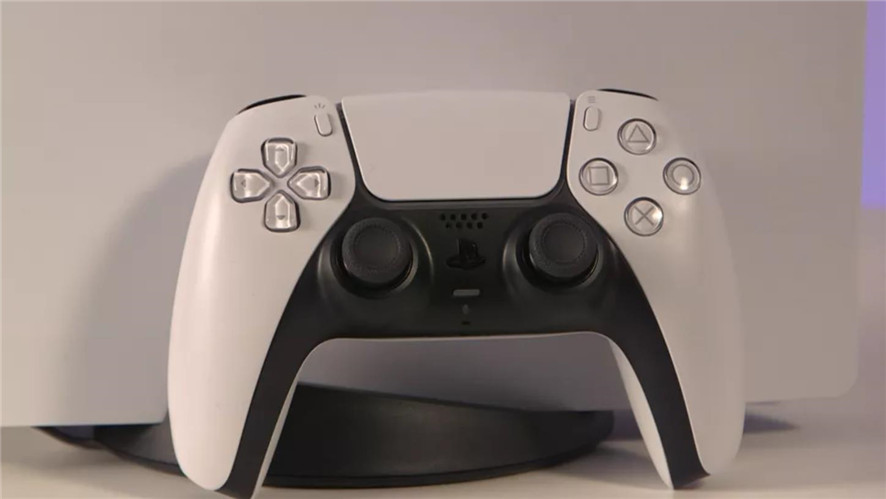
To navigate this brave new world of console gaming, you’ll need a new gamepad – namely, the new Sony DualSense controller. You’ll be pleased to hear that you get a DualSense controller in the box with your PS5. The DualSense feels similar in the hand to the DualShock 4 that shipped with the PS4, and we found it to be incredibly comfortable to hold for extended periods.
Picking it up for the first time, the DualSense is fairly light and balanced, with most of the weight resting in the grips of the controller. While the majority of the controller features a matte white plastic finish, the bottoms of the grips themselves have a slightly rougher texture that actually makes the controller easier to hold, and less likely to slip out of your hands.
In fact, if you look closely, the texture is made up of tiny PlayStation face buttons, which is a neat little touch.
The two-tone PS5 controller color scheme extends to the four face buttons, which still consist of the classic Triangle, Circle, Square and Cross (or X); however these are now devoid of color, and remind us of the PS Vita’s minimalist approach.
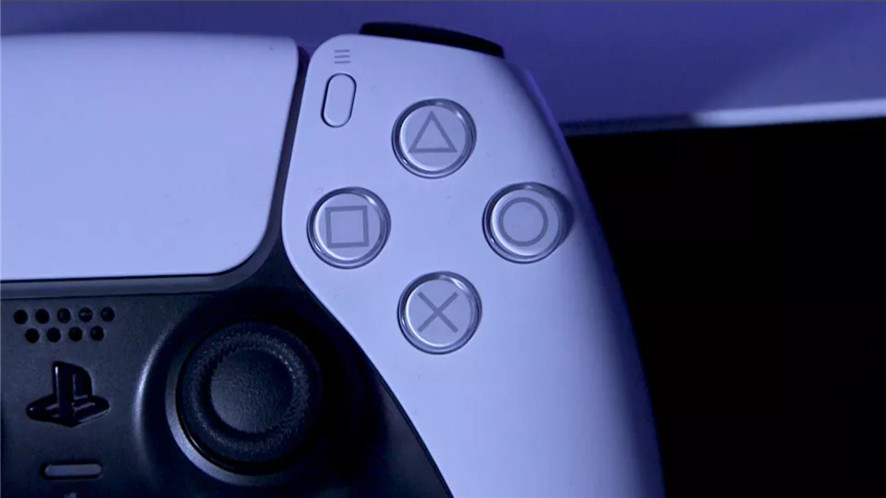
There’s a pop of color around the side of the central touchpad, though, as the PS4 Lightbar has thankfully been moved from the top of the gamepad to a less problematic position – thanks to its new placement, you won’t now see an annoying glow reflecting off your TV.
Where early PlayStation controllers sported a convex analog design, the PS5 DualSense controller has concave control sticks, just like the DualShock 4, and they feel noticeably more durable this time around, with a pleasing textured finish on the outer ridge.
On early models of the PS4 the rubber analog sticks would sometimes wear away under vigorous gameplay sessions, and though we haven’t seen it reoccur with the DualSense so far, we’ll be keeping a close eye on the durability of the rubber coating.
You’ll notice a few new buttons you haven’t seen before on Sony’s new pad, too – like the mute button that turns off the microphone that’s built into the controller.
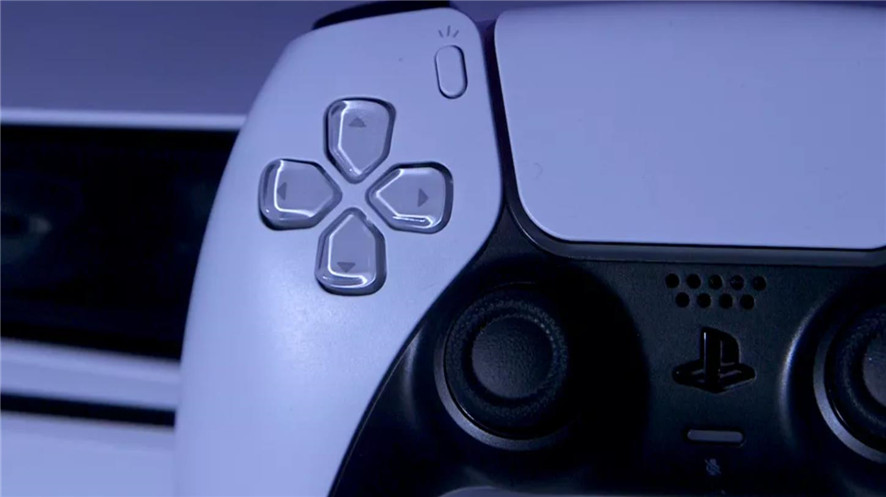
When this is held down, it can even mute your television speakers or headset, which we found to be a useful quality-of-life feature. When speaking into the mic, we found it worked best when we kept the controller in our usual playing position, instead of holding it towards our mouth.
The highlights of the new DualSense controller, however, are the adaptive trigger buttons that allow developers to add resistance to certain in-game actions. The adaptive triggers can use resistance to create various sensations that mimic real-life actions, like pushing down on the pedal of a car or pulling back a bow string.
It’s a huge step forward for haptics in Sony’s hardware, and we found that haptic feedback itself is a vastly superior replacement for the traditional rumble of old. When a character runs across a certain surface, like metal, it manages to somehow replicate that feeling in the palms of your hands – it’s a truly wonderful sensation.
So far we’ve seen a variation of haptic feedback support integrated into every PS5 game we’ve played so far, and hope to see it supported by more games in the future; we expect the feature to shine most in first-party titles though. Accessibility shouldn’t be a concern either, as the adaptive triggers and haptic feedback can be turned off at system level, or adjusted to suit your needs.
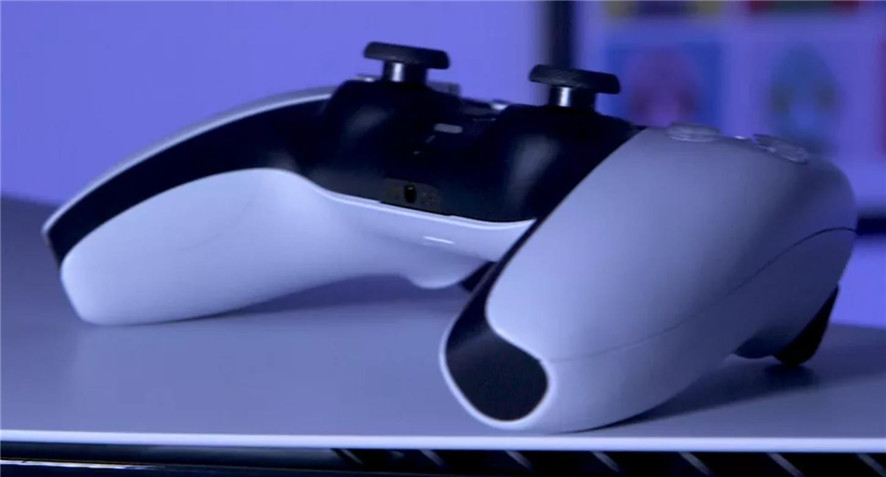
Battery life, so far, has been a monumental improvement over the DualShock 4. We played through a handful of PS5 and PS4 titles during our testing, including Marvel’s Spider-Man: Miles Morales and Astro’s Playroom, and the controller eventually ran out of charge after 12 hours and 30 minutes.
That’s an impressive feat when you consider the DualShock 4 lasted around five to eight hours at a stretch. While internal batteries can degrade over time, it’s a strong start for Sony’s new pad, particularly when you consider how much technology is packed into it. Of course, you can also use the controller wired if you prefer.
To charge the DualSense, you have two options: either connect it to the PlayStation 5 itself with the USB-C to USB-A cable that comes inside the box, or shell out for the optional DualSense Charging Station, which can charge two controllers at a time using the metal conduits on the bottom of the pad near the 3.5mm audio jack.
You can also charge the controller, or your USB headset, via the rear USB ports, or opt to use a USB-C to USB-C cable when using the front USB-C port to charge the DualSense controller.
Either option works well, but the Charging Station does certainly look nicer sitting on the shelf, and more cost-effective third-party charging stations will likely become available in the coming months. We’ll also need to test whether charging the controller via a USB-C to USB-C cable is quicker than using the USB-C to USB-A cable that comes with the console.
Source: Tech Radar


